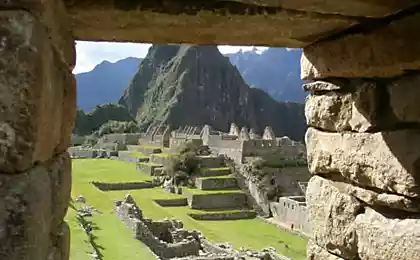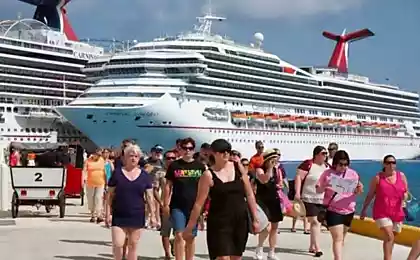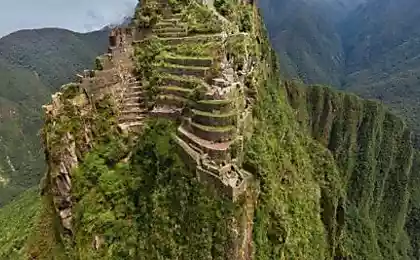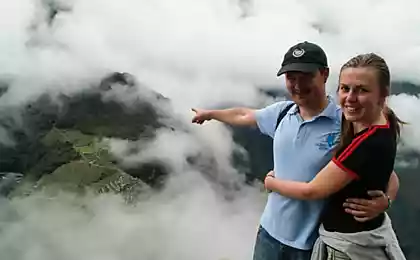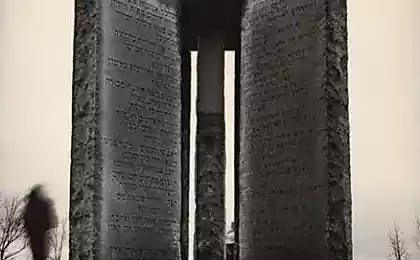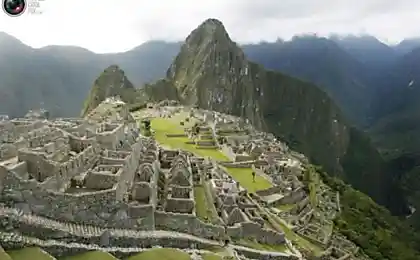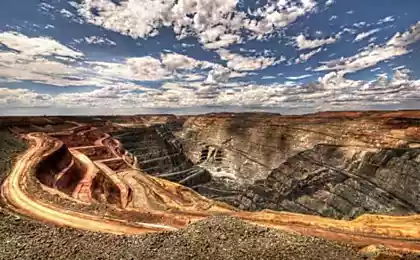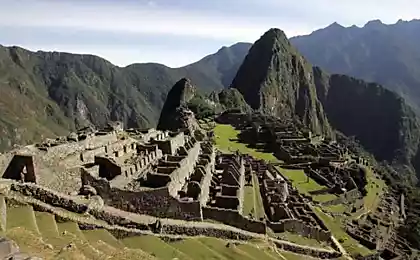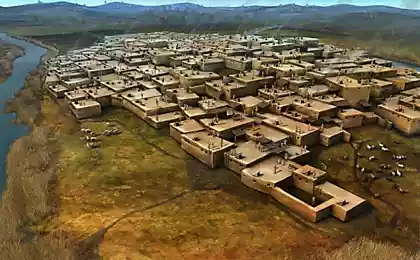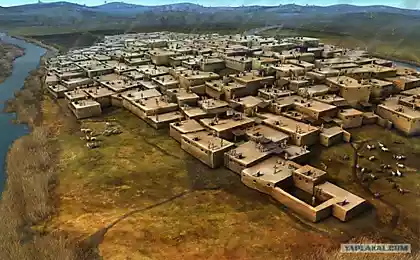1220
South American diary. Cusco. Machu Picchu.
Well we continue our journey through South America. The first two parts can be found here:
South American diary. Ecuador
South American diary. Peru
But those who have already seen, can safely read this post. Today, we are with you fly from Lima to Cusco. In which I happened birthday, and in the guinea pig, so the repose of her soul, a gastronomic hell. And of course the Congress on Railway road is very beautiful, very beautiful to the lost city.
The town is in the form of a modest but has a rich history. It proved that people settled here more than 3 thousand years ago.
According to the Spanish chronicler Sarmiento de Gamboa, Pedro, there is a Native American legend that the founder of the city is the first Inca - Manco Capac. He's with his family, having gone from Lake Titicaca, looking for somewhere to golden staff Manco Capac "went into the ground." That place turned out to be a settlement of the tribe Savasera Panaca, which had to be destroyed, then nothing prevented the establishment of the capital of the Inca Empire - Cusco.
The town's name is translated from the Quechua language - the official language of the Inca Empire, is the navel of the Earth, that is, in fact - the center of the world, which is consistent with the role of the capital. This concept was very popular and was even for the central object of worship sacred - Chuck.
November 15, 1533 here came the expedition of Francisco Pizarro, and according to historical tradition, the Spaniards' re-founded "has his own city.
After Manco Capac, the city has been greatly expanded Pachacuti. He managed to turn the Kingdom of Cusco from a sleeping city-state into a vast empire. However, archaeological evidence suggests a slow and organic growth of the city to the Incas - so it is believed that the very first settlement was established here Wari tribe people. Pachacuti also built several palaces and fortresses, updated Sun Temple, now known as Coricancha.
The town consisted of two sections - Upper and Lower Cuzco Cuzco, later, they were separated by walls on four areas: Chinchasuyu (NW), Antisuyu (CB), Kuntisuyu (SW) and Kollasuyu (SE). From each district led the way in the relevant part of the empire. Top Cusco in the early XX century were the parish of San Cristobal and San Blas; Lower Cuzco - all the neighborhoods on the right bank of the river Vatanay. These two neighborhoods separated Antisuyu road. The most important area called Kolkampata were also areas Kantokpata ("clove beds") Pumakurku, Tokokachi, located on the right bank of the stream Kkolkkechaka ("Golden Bridge"), Munaysenka, Rimakpampa ("Talking Square", where were announced orders) Pumakchupan ( "tail puma") Koyyankachi (village 500 meters away), Chokilchaka, Picchu, Kilipata, Karmenkka (comes out of it on the road Chinchasuyu) Uakapunku ("Gate of the Temple»).
Guideline person every area of the empire was to build a house in the relevant area of Cusco and live part of the year in the capital.
After Pachacuti, when the Inca died his title passed to one of his sons, and property - to other relatives. Therefore, each media title Inca had to build a new house and, accordingly, to acquire new lands to the empire.
Andean Indians are still leaving their homes and build new ones after the wedding, even if in an old house is empty.
Spanish first appeared in the city on November 15 1533. Spanish conquistador Francisco Pizarro, according to the official tradition, re-founded in 1534. Cusco Many buildings constructed after the Spanish conquest of Peru, carried out in the Spanish tradition with a mixture of Inca architecture; mainly in the counties of Santa Clara and San Blas. The Spaniards took over the structure of the old Inca city, built on the site Inca temples - the church, the site of palaces - accommodation for the conquerors. During the colonial period, Cusco was a prosperous city thanks to agriculture, mining and commerce with Spain. It was built many churches and monasteries, as well as the cathedral, university and Archbishopric. Often, Spanish buildings were located in the neighborhood and even were built directly on the massive stone walls, built by the Incas.
The building of the prefecture in which he lived Francisco Pizarro, who also was given later to the local municipality. The mansion de Arinas lived Gonzalo Pizarro. It is believed that the house number 55 on the Plaza San Francisco was a monk Valverde and his brother. On the stairs were attached bearing the coat of arms of four, one of them was the motto: "Virtue dealt well with me, so why not give the force." Outdoor Coca, number 46, in the house of the lord Antonio Muñiz Castro lived previously known historian Inca Garcilaso de la Vega.
It's a bit of history to represent the district. (Taken from themselves zneete ) And now will my photos with a few comments!
After arriving actively pumped up tea from coca leaves and I go to the center in the photoshoot. The height of 3500-3600 meters in the city, so that all traffic hasteless and slow.
Py.sy. When finished I say patience.
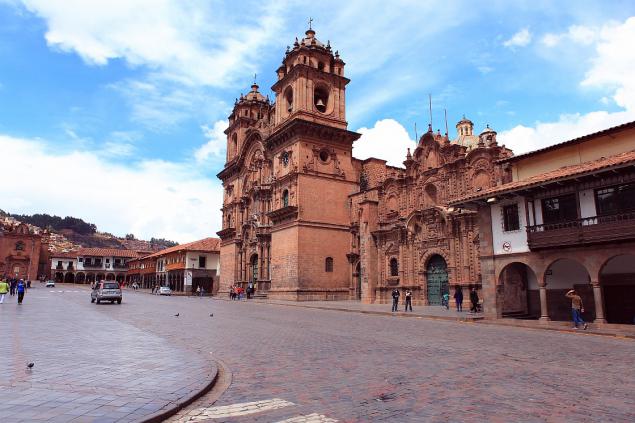
We leave the hotel and go to the center, on the road look like a local audience has a good time on Sunday. Oh, how good it outdoors but without computer)))
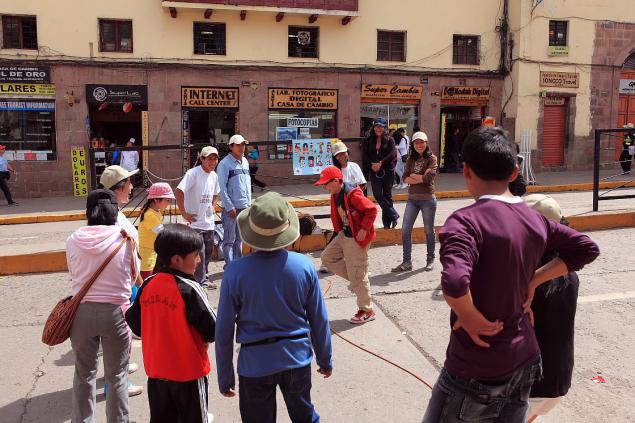
Maybe someone remembers how the game is called.?
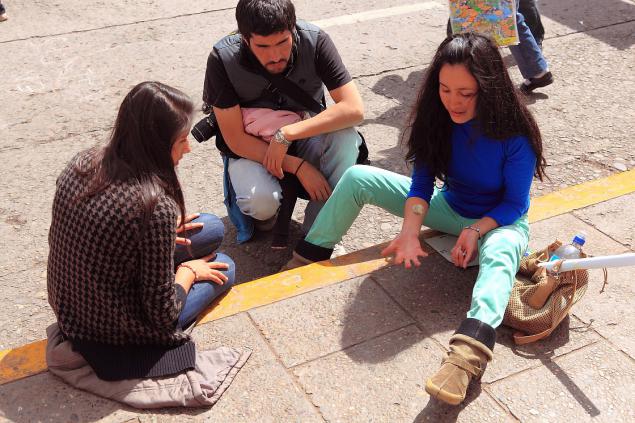
I understand that the point is to throw the ball so that he would have done as much as possible skeins.

the central square is a fun, involving local residents. What a show, I did not understand because they do not speak Spanish)
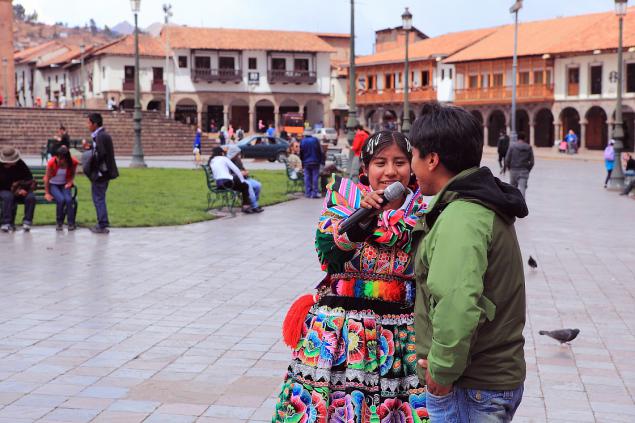
One of the branches of the central square
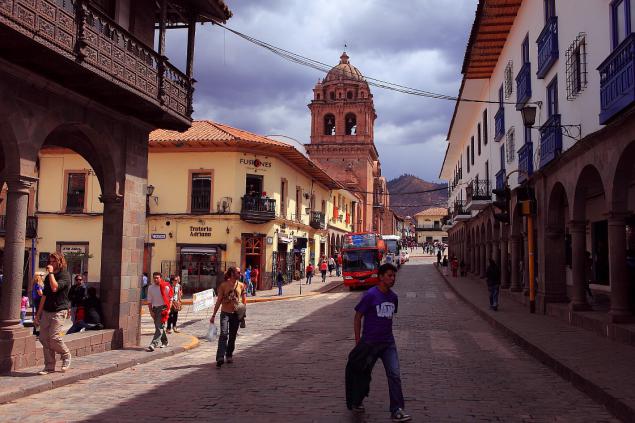
You can simply relax and enjoy an incomplete breast))) climbers will understand)

Central Square

there
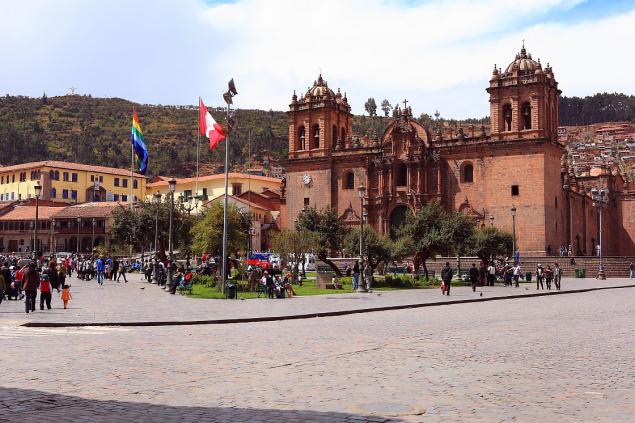
These are the streets ... I love them all life happens)
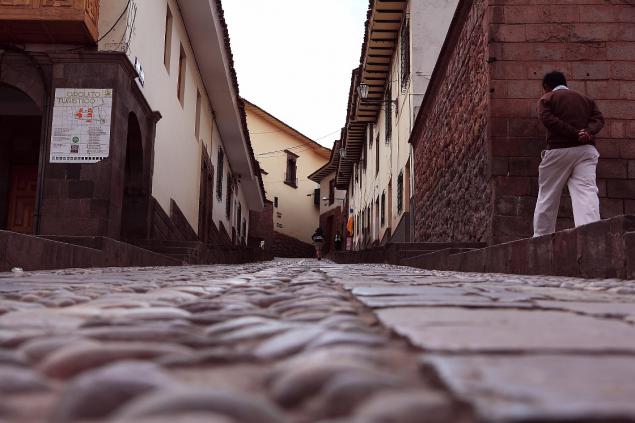
Famous masonry.
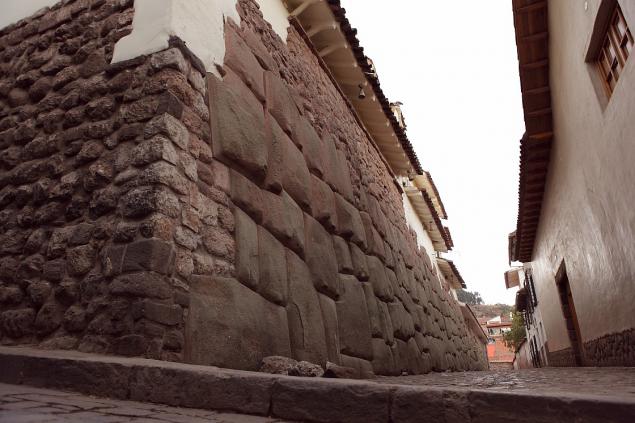
Closer. If you carefully consider what you can see how well adjusted stones

Another angle
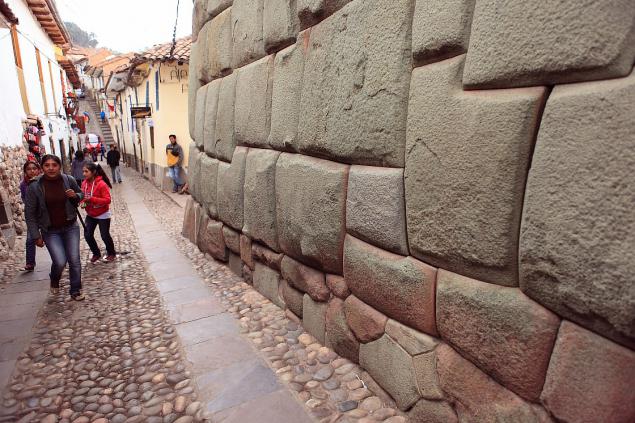
We return to the center in search of the restaurant, as inevitably approaching DR)
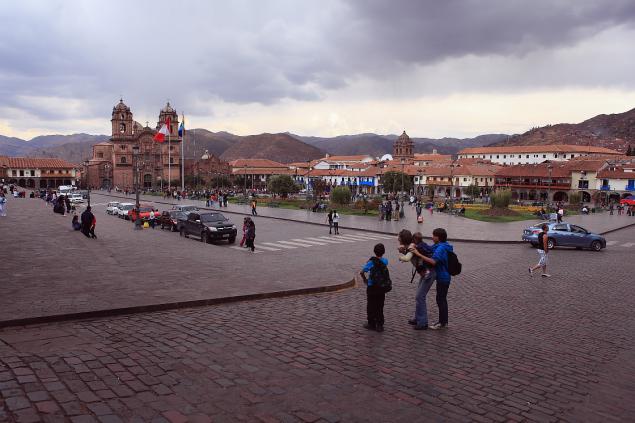
All restaurants in the center of the second floor on the balcony a great view!
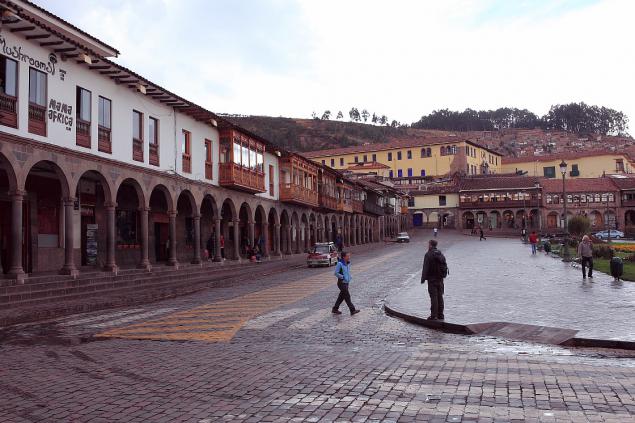
In general, after a long search, not finding a suitable institution and how dreamed ordered a gala dinner on the guinea pig. Now those eyes, they usually look at us)))
In the next photo, I'll show you how it looks after the processing temperature))) so that if there is nervous or moralists, close our eyes and scroll through the pictures !!!
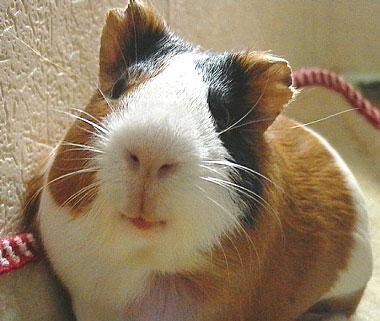
So)

and now photos for strong nerves.

And as if that would not have thought that cheating)
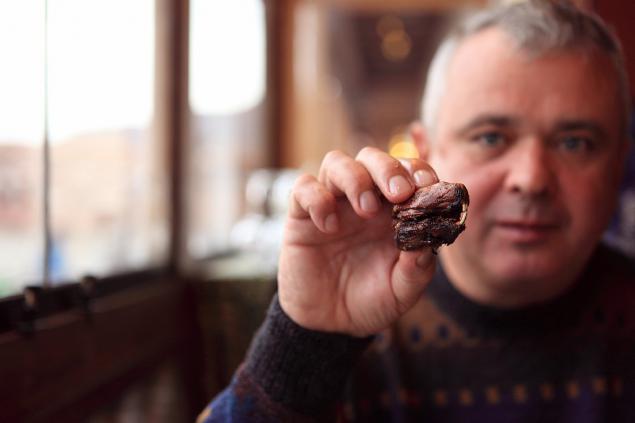
Here's a she, mumps. Or, as in common Kui !!! It tastes like a rabbit or nutria but not fatty meat completely. If you do not think about the moral side very well. I would even say very tasty! So DR was not in vain. Well, I'm moving around the city photographing the local flavor!
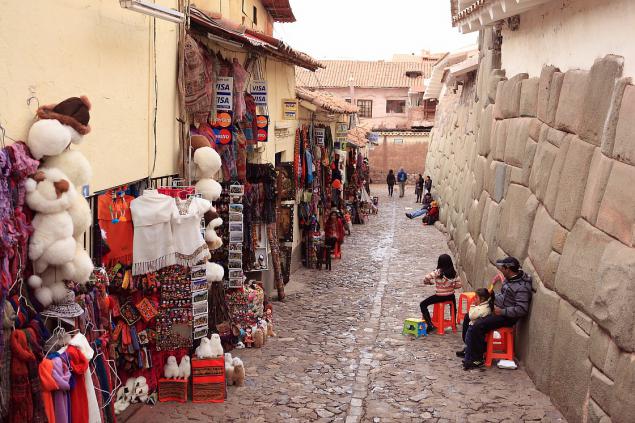
Why is similar to Colombo from the famous old series.
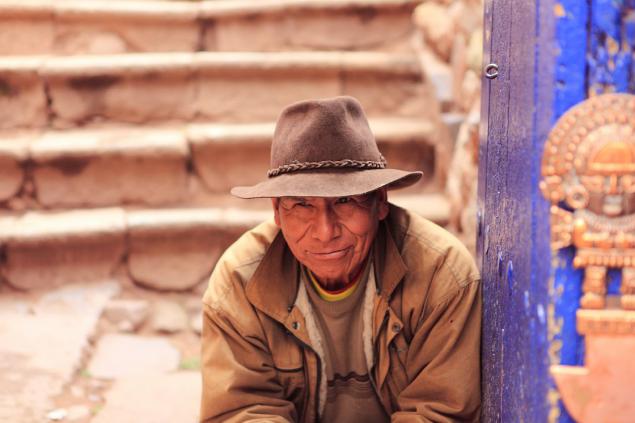
But these girls are pretty good in the photo sessions earn
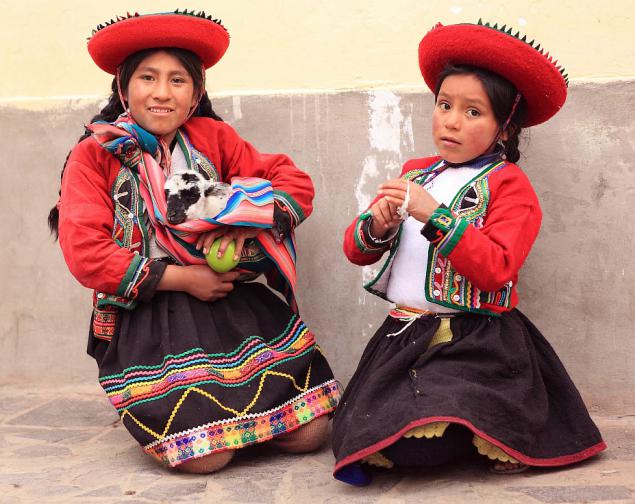
but this girl is not a girl, and maybe in the shower and left, I did not ask)
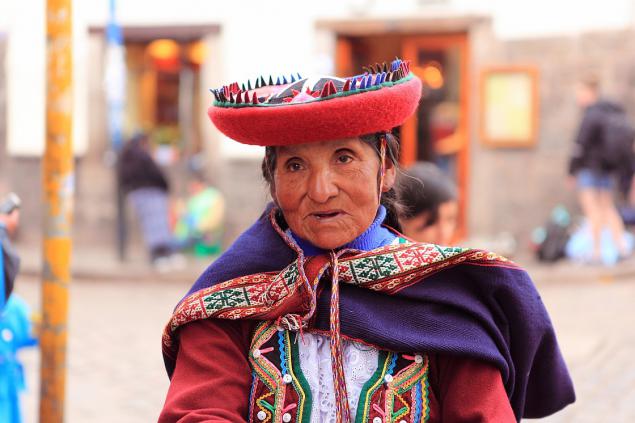
So, plenty of walk up and after eating forging forgive gosadi what do you say, tired but happy go to the hotel since early rise tomorrow and leave for the lost city of Machu Picchu.
Py.Sy. on the street about +7

The next day we go to the railway station Ktorov us and take you to Machu Picchu. The road winding and difficult, but the views are fantastic. So we go and look.

More

More

Villages along the way
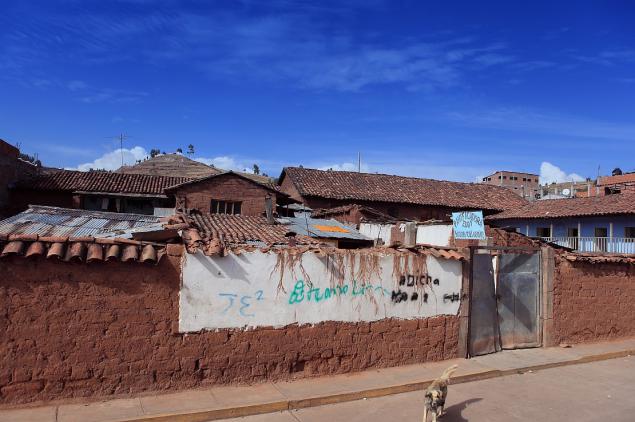
More
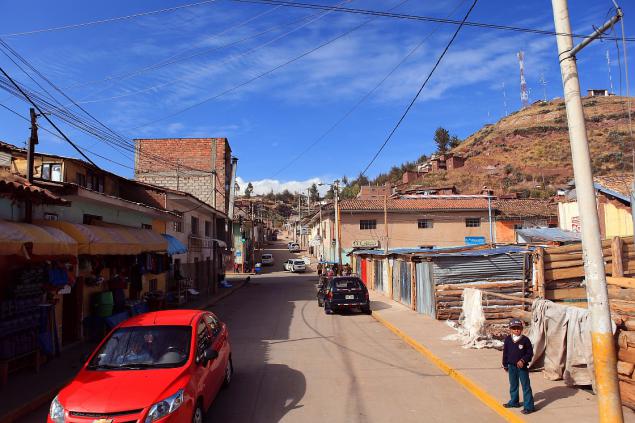
On the platform

but so you can take pictures of a same train

More

More

More

After two hours on the train, on arrival in the town of Aguas immediately carried out on the local market and a bus that already raises directly to the lost city
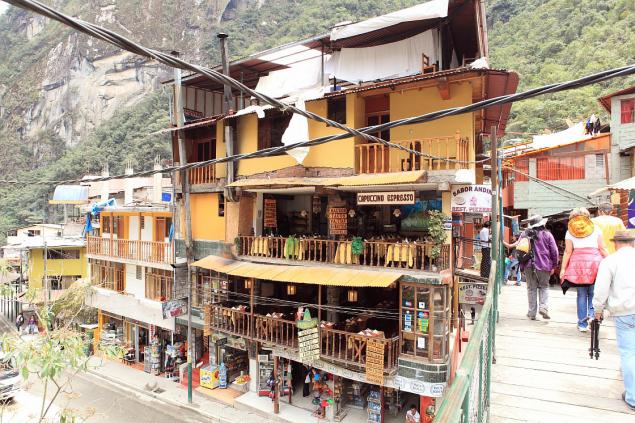
some more pictures of the town. By the way here is only accessible by the railway road.
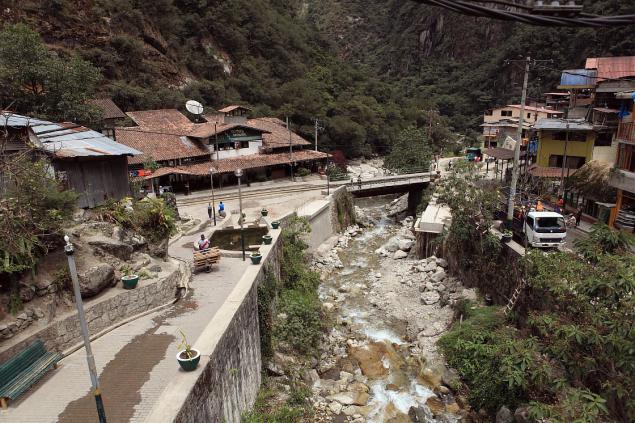
More

Backpacks for Kids

continue to go to the top of the bus on a streamer and a little raise legs
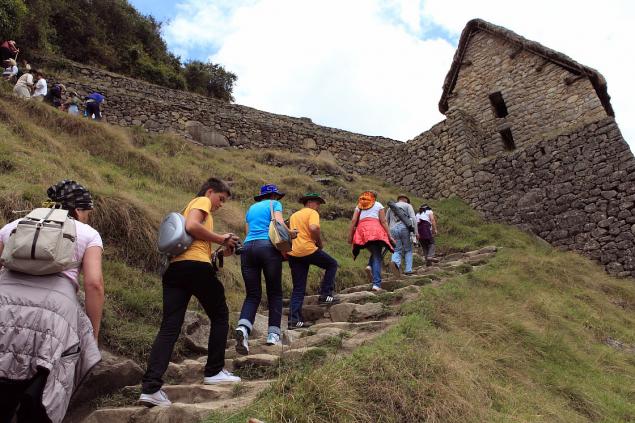
And our attention a wonderful view of the city.

Pachacutec built as the royal residence, as well as to perpetuate his name in the history of Machu Picchu was the third of its kind residences sanctuaries. According to its modest size Machu Picchu can not claim to be a large city - there are not more than 200 structures. This is mainly temples, residences, warehouses and other facilities for public use. Most of them are composed of well-worked stone, closely fitted to each other slabs. It is believed that in it and around it lived up to 1200 people, who worshiped the sun god Inti there and cultivated crops on terraces.
More than 400 years the city was forgotten and remained in ruins. He found an American researcher at Yale University professor Hiram Bingham III July 24, 1911. When he got here, accompanied by a dedicated government troop escort and local guide boy, he found the peasants living there. As they told him, they lived there "free, no unwanted visitors, officials, army recruiting" volunteers ", or tax collectors." In addition, there first has visited attractions lovers who left their names inscribed in the charcoal granite walls.
Machu Picchu has a very clear structure. In the south-east of the palace complex of buildings is guessed. The stones of which they are composed, handled so carefully that it's safe to say they were built not the masters, who have laid down other buildings. Probably, they were used as a dwelling dignitaries and grandees.

Spanish conquistadors did not get to Machu Picchu. This city was not destroyed. We are not aware of any objective of its construction or the number of residents, not even his real name.
American researchers Richard Burger and Lucy Salazar from Yale University, based on the materials of the Spanish chronicles of the XVI century, have suggested that it was the winter residence of Pachacutec. In summer, during the rainy season in the city, in all likelihood, was no more than 200 people. Later, after the collapse of the Inca empire, the city lost its importance, and the residents had left him forever.
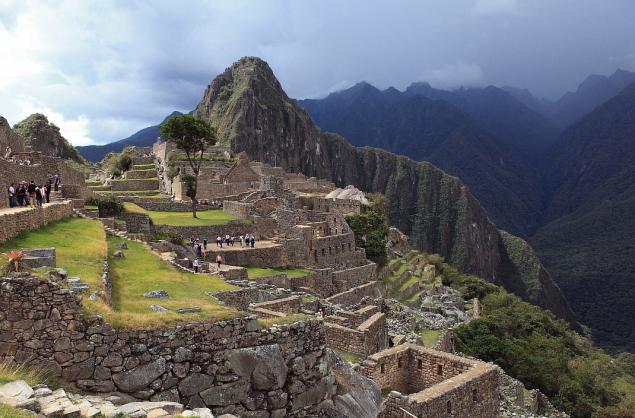
More
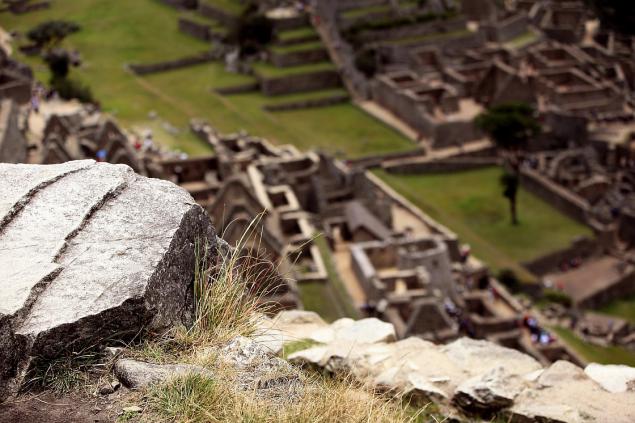
yet. It is a pity that a lot of people. but the place is untwisted)
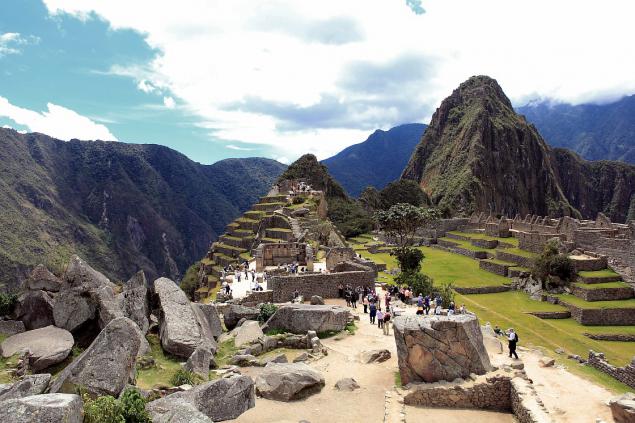
These are positive retirees, and ride the world

youth also present
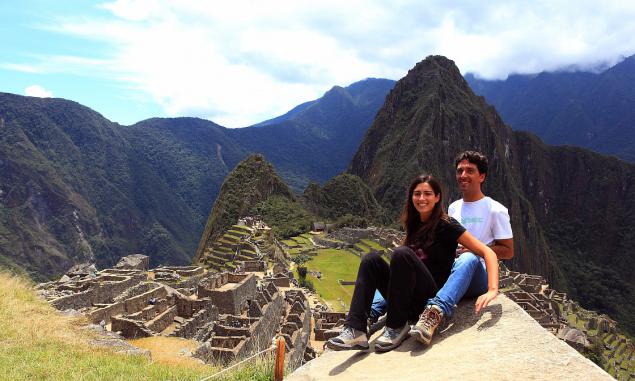
Mini group. one a tourist guide. the best option
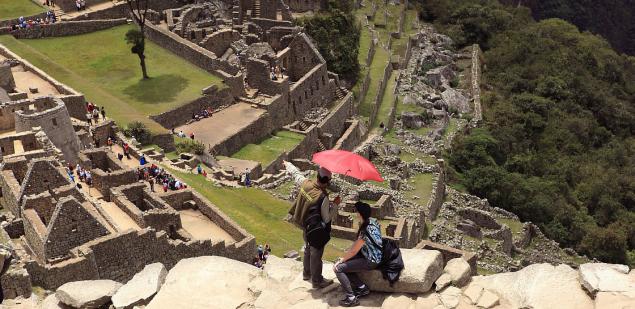
But this girl, I understand marks the top model
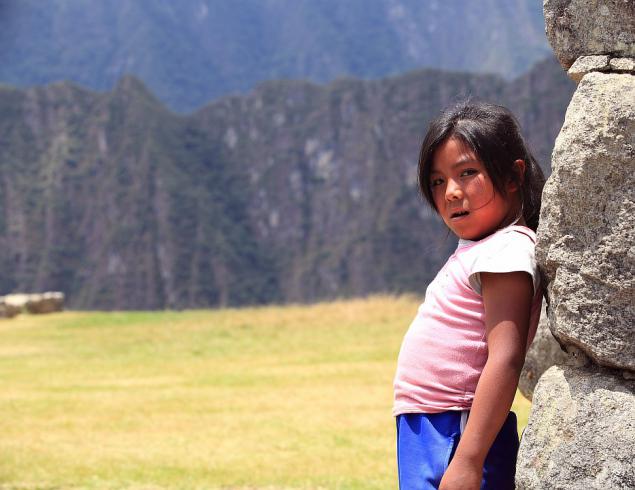
You can just sit and contemplate and fed kakoytotam very strong energy ... travel stories)

I gazed at the abyss and yet the new running shoes. I'll show them to you on Easter Island, where they found peace and quiet)))
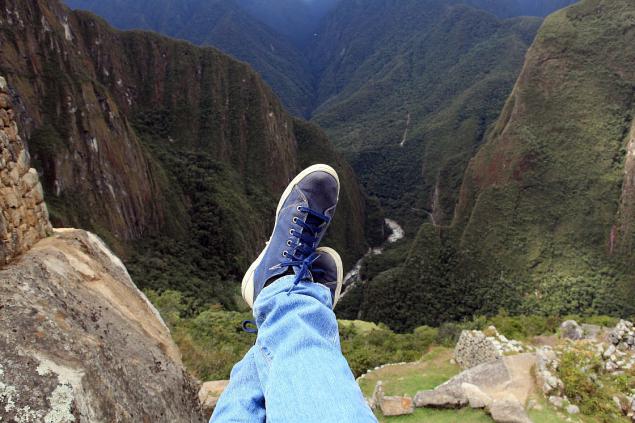
Lost - the so-called gardens. Eat the local people in addition to the Cueva that it was necessary, and that's grown on the slopes of the vegetables and fruits
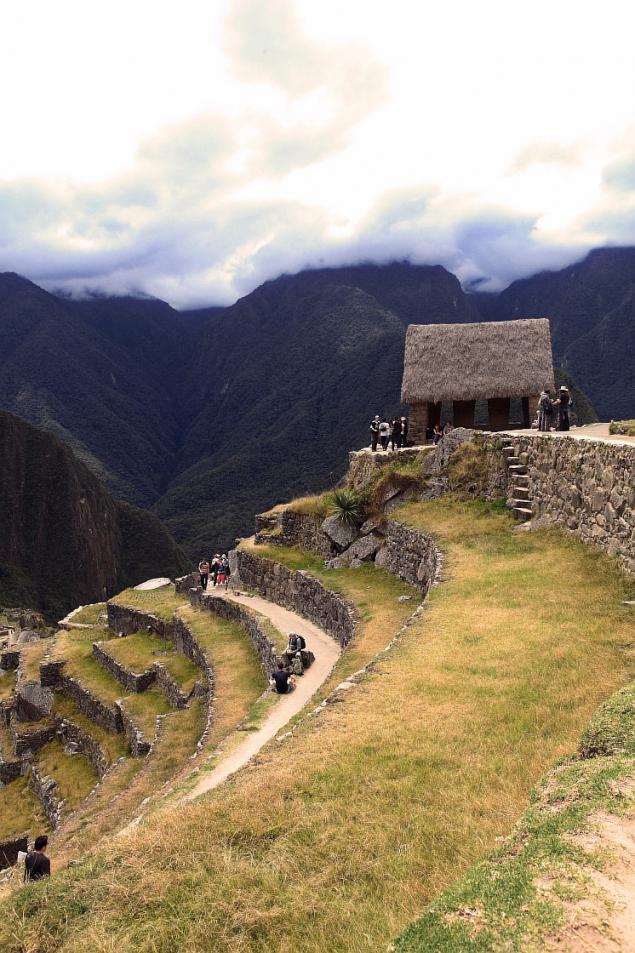
Well, that's probably it! back on the road with drunk Englishmen in the train, but it's a different and interesting story.
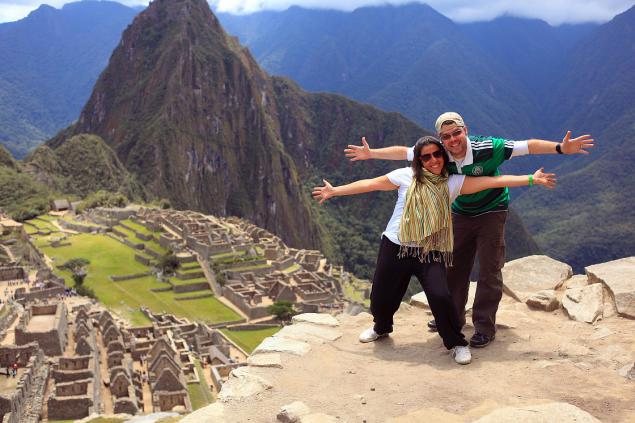
The next time I tell a little about Stalitse Chile Santiago, on security in South America
And of course a lot of pictures of Easter Island.
Py.sy. Thank you for your attention, I hope everyone was interested.

Source:
South American diary. Ecuador
South American diary. Peru
But those who have already seen, can safely read this post. Today, we are with you fly from Lima to Cusco. In which I happened birthday, and in the guinea pig, so the repose of her soul, a gastronomic hell. And of course the Congress on Railway road is very beautiful, very beautiful to the lost city.
The town is in the form of a modest but has a rich history. It proved that people settled here more than 3 thousand years ago.
According to the Spanish chronicler Sarmiento de Gamboa, Pedro, there is a Native American legend that the founder of the city is the first Inca - Manco Capac. He's with his family, having gone from Lake Titicaca, looking for somewhere to golden staff Manco Capac "went into the ground." That place turned out to be a settlement of the tribe Savasera Panaca, which had to be destroyed, then nothing prevented the establishment of the capital of the Inca Empire - Cusco.
The town's name is translated from the Quechua language - the official language of the Inca Empire, is the navel of the Earth, that is, in fact - the center of the world, which is consistent with the role of the capital. This concept was very popular and was even for the central object of worship sacred - Chuck.
November 15, 1533 here came the expedition of Francisco Pizarro, and according to historical tradition, the Spaniards' re-founded "has his own city.
After Manco Capac, the city has been greatly expanded Pachacuti. He managed to turn the Kingdom of Cusco from a sleeping city-state into a vast empire. However, archaeological evidence suggests a slow and organic growth of the city to the Incas - so it is believed that the very first settlement was established here Wari tribe people. Pachacuti also built several palaces and fortresses, updated Sun Temple, now known as Coricancha.
The town consisted of two sections - Upper and Lower Cuzco Cuzco, later, they were separated by walls on four areas: Chinchasuyu (NW), Antisuyu (CB), Kuntisuyu (SW) and Kollasuyu (SE). From each district led the way in the relevant part of the empire. Top Cusco in the early XX century were the parish of San Cristobal and San Blas; Lower Cuzco - all the neighborhoods on the right bank of the river Vatanay. These two neighborhoods separated Antisuyu road. The most important area called Kolkampata were also areas Kantokpata ("clove beds") Pumakurku, Tokokachi, located on the right bank of the stream Kkolkkechaka ("Golden Bridge"), Munaysenka, Rimakpampa ("Talking Square", where were announced orders) Pumakchupan ( "tail puma") Koyyankachi (village 500 meters away), Chokilchaka, Picchu, Kilipata, Karmenkka (comes out of it on the road Chinchasuyu) Uakapunku ("Gate of the Temple»).
Guideline person every area of the empire was to build a house in the relevant area of Cusco and live part of the year in the capital.
After Pachacuti, when the Inca died his title passed to one of his sons, and property - to other relatives. Therefore, each media title Inca had to build a new house and, accordingly, to acquire new lands to the empire.
Andean Indians are still leaving their homes and build new ones after the wedding, even if in an old house is empty.
Spanish first appeared in the city on November 15 1533. Spanish conquistador Francisco Pizarro, according to the official tradition, re-founded in 1534. Cusco Many buildings constructed after the Spanish conquest of Peru, carried out in the Spanish tradition with a mixture of Inca architecture; mainly in the counties of Santa Clara and San Blas. The Spaniards took over the structure of the old Inca city, built on the site Inca temples - the church, the site of palaces - accommodation for the conquerors. During the colonial period, Cusco was a prosperous city thanks to agriculture, mining and commerce with Spain. It was built many churches and monasteries, as well as the cathedral, university and Archbishopric. Often, Spanish buildings were located in the neighborhood and even were built directly on the massive stone walls, built by the Incas.
The building of the prefecture in which he lived Francisco Pizarro, who also was given later to the local municipality. The mansion de Arinas lived Gonzalo Pizarro. It is believed that the house number 55 on the Plaza San Francisco was a monk Valverde and his brother. On the stairs were attached bearing the coat of arms of four, one of them was the motto: "Virtue dealt well with me, so why not give the force." Outdoor Coca, number 46, in the house of the lord Antonio Muñiz Castro lived previously known historian Inca Garcilaso de la Vega.
It's a bit of history to represent the district. (Taken from themselves zneete ) And now will my photos with a few comments!
After arriving actively pumped up tea from coca leaves and I go to the center in the photoshoot. The height of 3500-3600 meters in the city, so that all traffic hasteless and slow.
Py.sy. When finished I say patience.

We leave the hotel and go to the center, on the road look like a local audience has a good time on Sunday. Oh, how good it outdoors but without computer)))

Maybe someone remembers how the game is called.?

I understand that the point is to throw the ball so that he would have done as much as possible skeins.

the central square is a fun, involving local residents. What a show, I did not understand because they do not speak Spanish)

One of the branches of the central square

You can simply relax and enjoy an incomplete breast))) climbers will understand)

Central Square

there

These are the streets ... I love them all life happens)

Famous masonry.

Closer. If you carefully consider what you can see how well adjusted stones

Another angle

We return to the center in search of the restaurant, as inevitably approaching DR)

All restaurants in the center of the second floor on the balcony a great view!

In general, after a long search, not finding a suitable institution and how dreamed ordered a gala dinner on the guinea pig. Now those eyes, they usually look at us)))
In the next photo, I'll show you how it looks after the processing temperature))) so that if there is nervous or moralists, close our eyes and scroll through the pictures !!!

So)

and now photos for strong nerves.

And as if that would not have thought that cheating)

Here's a she, mumps. Or, as in common Kui !!! It tastes like a rabbit or nutria but not fatty meat completely. If you do not think about the moral side very well. I would even say very tasty! So DR was not in vain. Well, I'm moving around the city photographing the local flavor!

Why is similar to Colombo from the famous old series.

But these girls are pretty good in the photo sessions earn

but this girl is not a girl, and maybe in the shower and left, I did not ask)

So, plenty of walk up and after eating forging forgive gosadi what do you say, tired but happy go to the hotel since early rise tomorrow and leave for the lost city of Machu Picchu.
Py.Sy. on the street about +7

The next day we go to the railway station Ktorov us and take you to Machu Picchu. The road winding and difficult, but the views are fantastic. So we go and look.

More

More

Villages along the way

More

On the platform

but so you can take pictures of a same train

More

More

More

After two hours on the train, on arrival in the town of Aguas immediately carried out on the local market and a bus that already raises directly to the lost city

some more pictures of the town. By the way here is only accessible by the railway road.

More

Backpacks for Kids

continue to go to the top of the bus on a streamer and a little raise legs

And our attention a wonderful view of the city.

Pachacutec built as the royal residence, as well as to perpetuate his name in the history of Machu Picchu was the third of its kind residences sanctuaries. According to its modest size Machu Picchu can not claim to be a large city - there are not more than 200 structures. This is mainly temples, residences, warehouses and other facilities for public use. Most of them are composed of well-worked stone, closely fitted to each other slabs. It is believed that in it and around it lived up to 1200 people, who worshiped the sun god Inti there and cultivated crops on terraces.
More than 400 years the city was forgotten and remained in ruins. He found an American researcher at Yale University professor Hiram Bingham III July 24, 1911. When he got here, accompanied by a dedicated government troop escort and local guide boy, he found the peasants living there. As they told him, they lived there "free, no unwanted visitors, officials, army recruiting" volunteers ", or tax collectors." In addition, there first has visited attractions lovers who left their names inscribed in the charcoal granite walls.
Machu Picchu has a very clear structure. In the south-east of the palace complex of buildings is guessed. The stones of which they are composed, handled so carefully that it's safe to say they were built not the masters, who have laid down other buildings. Probably, they were used as a dwelling dignitaries and grandees.

Spanish conquistadors did not get to Machu Picchu. This city was not destroyed. We are not aware of any objective of its construction or the number of residents, not even his real name.
American researchers Richard Burger and Lucy Salazar from Yale University, based on the materials of the Spanish chronicles of the XVI century, have suggested that it was the winter residence of Pachacutec. In summer, during the rainy season in the city, in all likelihood, was no more than 200 people. Later, after the collapse of the Inca empire, the city lost its importance, and the residents had left him forever.

More

yet. It is a pity that a lot of people. but the place is untwisted)

These are positive retirees, and ride the world

youth also present

Mini group. one a tourist guide. the best option

But this girl, I understand marks the top model

You can just sit and contemplate and fed kakoytotam very strong energy ... travel stories)

I gazed at the abyss and yet the new running shoes. I'll show them to you on Easter Island, where they found peace and quiet)))

Lost - the so-called gardens. Eat the local people in addition to the Cueva that it was necessary, and that's grown on the slopes of the vegetables and fruits

Well, that's probably it! back on the road with drunk Englishmen in the train, but it's a different and interesting story.

The next time I tell a little about Stalitse Chile Santiago, on security in South America
And of course a lot of pictures of Easter Island.
Py.sy. Thank you for your attention, I hope everyone was interested.

Source:
